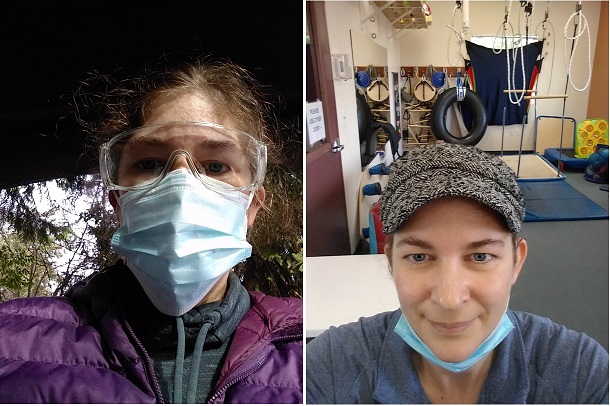When I was a child, I was introduced to what was called then “therapeutic horsemanship” through my 4-H club. I volunteered for years, and even taught lessons. Adaptive horseback riding makes horseback riding accessible to all!
As an adult I discovered occupational therapy. While going to school at UW, I volunteered at Little Bit Therapeutic Riding Center, eventually leading the therapy department during our move from Woodinville to Redmond.
At the same time I was working at Little Bit using “hippotherapy” for my mainly pediatric patients, I was deepening my understanding of occupational therapy working in other areas with a wider range of people at skilled nursing facilities, schools and private pediatric clinics. Currently, I work at Little Bit, using hippotherapy to help kids learn skills to fully participate in play, self-care and school, and at Evergreen Home Health to support older adults to be as independent and safe as possible. Both jobs are a lot of fun and personally rewarding when you feel you are making a positive impact.
I have been an occupational therapist for 13 years and enjoy the perspective it gives me on life! I have come to understand the importance of little things, like being able to brush your hair, write your name and play a game of tag. But sometimes I also get to be part of the big things, such as first words and first steps.
I remember a 6 year old client who was non-ambulatory due to a genetic disorder. She had been introduced a few months prior to me meeting her to a unique walker that had a seat and way for her to initiate movement by stepping, but she was not able to use it. After a couple of sessions of occupational therapy on the horse, she was on her way to learning how to walk and it just took the unique movement of the horse to move her hips in a similar way to walking for those hardwired neural pathways to be rebooted.
Another moment that I will always remember is when I was teaching horseback riding lessons to people with disabilities in Japan. I was not an OT yet, but I did have my adaptive riding certification. I had a young boy with autism on a horse that I was lunging (going around a circle on a long line) and I was teaching him how to post at the trot (go up and down with the movement). He was doing really well! I looked over at his mom who was watching closely and I saw tears in her eyes and I realized that, for this non-verbal boy with autism with real difficulty regulating most of the time, this instance of being calm, focused and in tune with the horse, was significant. I didn’t fully comprehend what an accomplishment this was until I saw his mother’s tears.
I am excited about the profession, and feel inclusion is being recognized more and more as the best model, because we all benefit when people with disabilities are able to engage and participate in life’s activities as they would like.

